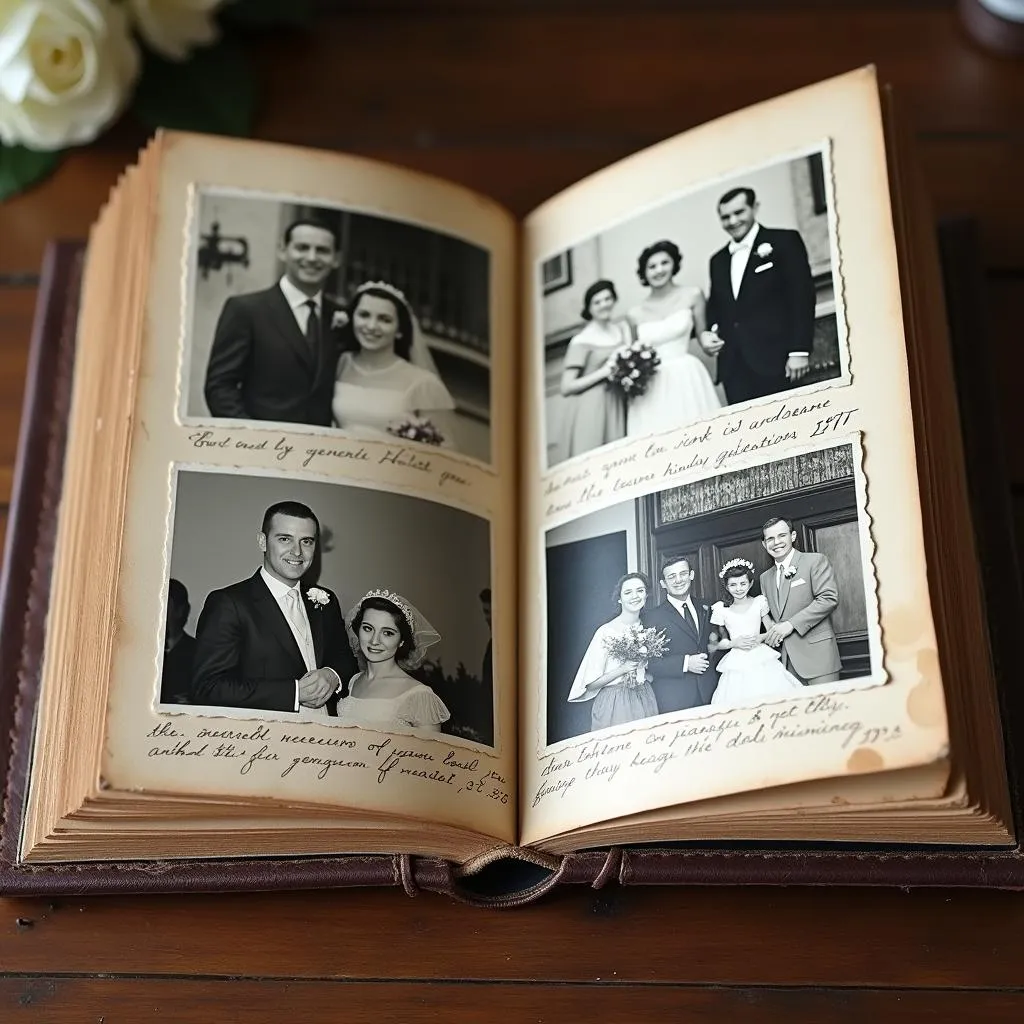Describing a Photograph in IELTS Speaking
Describing a photograph in your home is a common topic in IELTS Speaking exams. This task allows examiners to assess your ability to describe visual elements, express personal connections, and use appropriate vocabulary. Let’s explore how to tackle this topic effectively and score high marks in your IELTS Speaking test.
Part 1: Introduction and Interview
In Part 1, the examiner may ask you some general questions about photographs. Here are some possible questions and sample answers:
- Do you like taking photographs?
- Do you prefer to take photos yourself or have other people take photos of you?
- How often do you take photos?
Let’s focus on the first question:
Examiner: Do you like taking photographs?
Band 6-7 Answer:
Yes, I do enjoy taking photographs. It’s a nice way to capture memories and special moments. I usually take photos when I’m on holiday or at family gatherings.
Band 8-9 Answer:
Absolutely, I’m quite passionate about photography. It’s not just a hobby for me, but a creative outlet that allows me to capture fleeting moments and preserve memories. I find it particularly rewarding to experiment with different techniques, like playing with light and composition, to create visually striking images.
Part 2: Long Turn (Cue Card)
Here’s a sample cue card related to describing a photograph in your home:
Describe a photograph in your home that is important to you.
You should say:
- What the photograph shows
- Where it is in your home
- When the photograph was taken
- And explain why this photograph is important to you
Band 6-7 Answer:
The photograph I want to describe is of my family at my university graduation. It shows me in my graduation gown, standing with my parents and younger sister. We’re all smiling and looking happy.
The photo is displayed in a simple wooden frame on a shelf in our living room. It’s in a prominent place where everyone can see it when they visit.
This picture was taken about three years ago, on the day I graduated from university. It was a sunny day in June, and I remember feeling really proud and excited.
This photograph is important to me because it captures a significant milestone in my life. It reminds me of my academic achievement and the support my family gave me throughout my studies. Whenever I look at it, I feel grateful for their encouragement and proud of what I accomplished.
Band 8-9 Answer:
The photograph I’d like to describe is a cherished family portrait that holds a special place in my heart. It depicts a candid moment from my university graduation day, featuring myself in full academic regalia, flanked by my beaming parents and my younger sister.
This treasured memento occupies a place of honor in our home, prominently displayed in an elegantly crafted wooden frame on the mantelpiece in our living room. Its central location ensures that it’s a constant reminder of that momentous day and the journey that led to it.
The photograph was taken approximately three years ago, on a glorious summer’s day in June. The vibrant colors and radiant smiles captured in the image perfectly encapsulate the joyous atmosphere of the occasion.
This particular photograph holds immense importance for me for several reasons. Firstly, it symbolizes the culmination of years of hard work and dedication, not just on my part, but also the unwavering support of my family. Moreover, it serves as a poignant reminder of the pivotal role my loved ones played in my academic journey. The genuine happiness evident in our expressions speaks volumes about the close-knit bond we share as a family. Whenever my gaze falls upon this photograph, I’m overwhelmed with a sense of gratitude for my family’s encouragement and immense pride in what we’ve achieved together.
 Family Graduation Portrait
Family Graduation Portrait
Follow-up Questions
- How has photography changed in recent years?
- Do you think it’s important to print photographs or is it okay to keep them digitally?
Band 6-7 Answer (Question 1):
Photography has changed a lot recently. Now, most people use smartphones to take photos instead of traditional cameras. It’s much easier to take and share pictures instantly. Also, there are many apps for editing photos quickly.
Band 8-9 Answer (Question 1):
The landscape of photography has undergone a dramatic transformation in recent years. The ubiquity of smartphones with high-quality cameras has democratized photography, making it accessible to virtually everyone. This has led to an exponential increase in the number of photos taken daily. Moreover, the rise of social media platforms has changed how we share and consume images, creating a culture of instant visual communication.
Additionally, advancements in digital editing software have blurred the lines between photography and digital art, allowing for unprecedented levels of creative expression. The emergence of AI-powered technologies in photography, such as automated editing and object recognition, is further revolutionizing the field, opening up new possibilities while also raising questions about authenticity in the digital age.
Part 3: Two-way Discussion
Examiner: How do you think the role of photography in preserving memories has changed over time?
Band 6-7 Answer:
I think the role of photography in preserving memories has changed quite a bit over time. In the past, people took fewer photos because cameras and film were expensive. They usually only took pictures of special events like weddings or birthdays. Now, with digital cameras and smartphones, we can take photos of anything, anytime. This means we can capture more everyday moments, not just big events. Also, it’s easier to store and share photos now, so we can keep more memories and share them with others easily.
Band 8-9 Answer:
The evolution of photography’s role in preserving memories has been truly transformative. In the pre-digital era, photography was often reserved for momentous occasions, with each frame carefully considered due to the limitations and costs associated with film. This scarcity imbued each photograph with a certain gravitas and significance.
 Vintage Family Photo Album
Vintage Family Photo Album
Fast forward to today, and we’re witnessing a paradigm shift in how we document our lives. The ubiquity of digital devices has led to a democratization of memory preservation. We now have the capability to capture and store an unprecedented volume of images, from life-changing events to the most mundane aspects of our daily routines.
This shift has both enriched and complicated our relationship with memories. On one hand, we have access to a more comprehensive visual diary of our lives, allowing us to revisit moments that might have otherwise been forgotten. The ease of sharing these memories has also fostered a sense of communal experience and connection.
However, this abundance also poses challenges. The sheer volume of images we accumulate can lead to a sense of visual overload, potentially diluting the impact of truly significant moments. There’s also the question of digital permanence – while we can store more, there’s a risk of losing everything if not properly backed up.
Moreover, the constant documentation of our lives has changed how we experience moments in real-time. There’s a tendency to view life through a lens, potentially sacrificing present engagement for future reminiscence.
In essence, while modern photography has exponentially expanded our ability to preserve memories, it has also altered the very nature of how we create, value, and interact with those memories.
Key Vocabulary and Phrases for High Scores
-
Cherished /ˈtʃerɪʃt/ (adjective): loved and protected with care
Example: This cherished photograph reminds me of my childhood summers. -
Depicts /dɪˈpɪkts/ (verb): shows or represents something in a picture or story
Example: The painting vividly depicts a rural landscape. -
Candid moment /ˈkændɪd ˈməʊmənt/ (phrase): an unposed, natural instance captured in a photograph
Example: The photographer captured a beautiful candid moment of the couple laughing. -
Place of honor /pleɪs əv ˈɒnər/ (phrase): a prominent or important position
Example: The trophy was given a place of honor on the mantelpiece. -
Poignant reminder /ˈpɔɪnjənt rɪˈmaɪndər/ (phrase): something that evokes a sharp feeling of sadness or regret
Example: The old letter served as a poignant reminder of her departed friend. -
Pivotal role /ˈpɪvətl rəʊl/ (phrase): a vitally important or essential function
Example: His mentor played a pivotal role in shaping his career.
Examiner’s Advice
To score high in the IELTS Speaking test when describing a photograph:
-
Use varied vocabulary: Incorporate a range of descriptive words and phrases to make your description vivid and engaging.
-
Provide details: Don’t just state what’s in the photo; describe colors, expressions, and the overall mood it conveys.
-
Express personal connection: Explain why the photograph is important to you, using emotive language to convey its significance.
-
Use appropriate tenses: Be mindful of using the correct tenses when describing when the photo was taken and its current placement.
-
Practice fluency: Aim to speak smoothly without long pauses. Regular practice can help improve your fluency.
-
Develop your answers: Provide comprehensive responses by elaborating on your points and giving examples where possible.
-
Stay on topic: While it’s good to elaborate, ensure your answers remain relevant to the question asked.
Remember, the key to success in IELTS Speaking is not just about what you say, but how you say it. Confidence, clarity, and fluency are just as important as vocabulary and grammar.
For more practice on IELTS Speaking topics, you might want to describe a weekend that you enjoyed or describe a place you want to visit to explore nature. These exercises can help you diversify your vocabulary and improve your ability to construct detailed responses.


